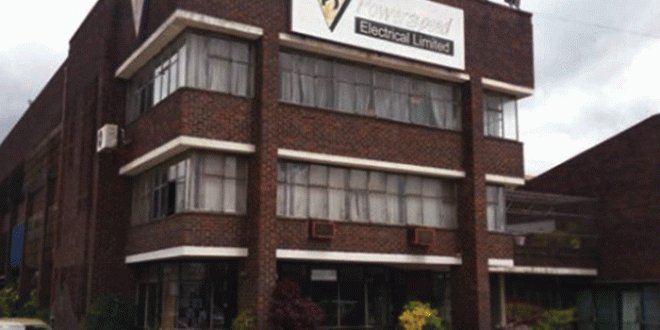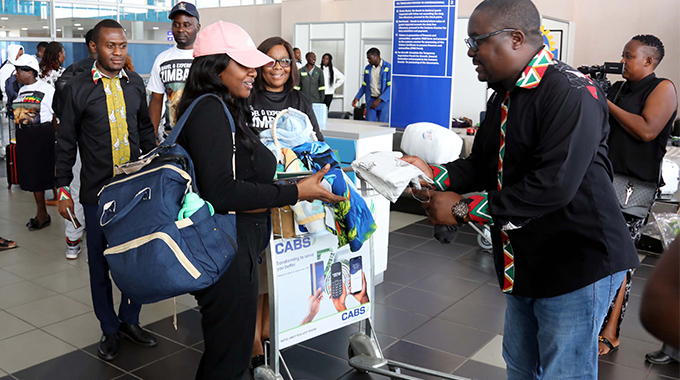Caledonia’s Bilboes primed to be Zim’s biggest gold asset
Caledonia Mining, which owns gold producer Blanket Mine in Gwanda, says its Bilboes project holds huge potential to become a transformative asset, judging from the findings of a Preliminary Economic Assessment (PEA) study, which suggests that the mine could become Zimbabwe’s largest gold mining asset.
The study shows Bilboes has the potential to produce 150 000 ounces of gold annually.
Under the leadership of chief executive officer Mark Learmonth, the company is looking at a timeline that could see the project’s first gold pour by 2028.
Mr Learmonth, in an interview with Mining Review Africa new publication, expressed his excitement over the findings of the PEA, emphasising that Bilboes offered a unique opportunity for Zimbabwe’s mining sector.
“The PEA we’ve completed confirms the results of a Feasibility Study (FS) carried out by the previous owners of Bilboes, which detailed a very robust open-pit project,” he said.
“According to our PEA, Bilboes will produce 1,52 million ounces of gold over a 10-year mine life at an average Life of Mine (LoM) AISC of US$968 per ounce.
“The payback is achieved in 1,9 years, which demonstrates the strong returns this project offers.”
This potential positions Bilboes as a game-changer for Caledonia Mining and the Zimbabwean gold sector, which has attracted limited large-scale investments in recent decades, compared to other key minerals like lithium and platinum.
Caledonia Mining’s foray into Zimbabwe has already proven successful with its flagship Blanket Mine, currently producing at world-class rate of 75 000 ounces of gold in 2023.
Bilboes, however, represents an even more attractive proposition, with the potential to significantly boost Caledonia’s production. The acquisition of Bilboes was part of Caledonia’s long-term strategy to expand beyond a single asset.
The total capital cost for Bilboes is estimated at US$403 million.
Caledonia intends to raise a significant portion of the required capital through debt financing, particularly from Africa-focused Development Financial Institutions (DFIs).
“We’re being advised by Cutfield Freeman, and our present thinking is that debt will account for roughly two-thirds of the $309 million of peak funding that we need,” Mr Learmonth said.
“We believe DFIs are the most likely lenders, as western banks may be hesitant to fund a project of this nature in Zimbabwe.”
Bilboes is not just an isolated development but a continuation of over 30 years of mining in the region.
Originally mined by Anglo-American Zimbabwe (Amzim) in the late 1980s, the project has already produced nearly 300 000 ounces of gold.
Caledonia’s executive director Mr Victor Gapare, who has been involved with Bilboes since his time at Anglo-American Zimbabwe’s time, remains optimistic about the future of the mine.
“At the time of the management buyout, the oxides were heavily depleted, but we knew there was considerable sulphide ore potential,” Mr Gapare said in the same interview.
“Amzim had conducted limited drilling in the 1990s, resulting in an inferred sulphide resource of just under 0,5 million ounces being declared in 2009. Our goal was always to expand this.”
Under Gapare’s leadership, an aggressive drilling campaign commenced in 2011, culminating in a resource declaration of 2,47 million ounces of gold in 2021.
This resource underpins the current PEA, which sets Bilboes apart from other gold projects in Africa.
The project’s resource grade is another standout feature, with an average of 2,30 grammes per tonne (g/t) in the measured and indicated categories.
According to Simba Chimedza, Caledonia’s group technical manager, this positions Bilboes as a leader among large-scale open-pit gold projects.
“The Bilboes ore is refractory and requires BIOX technology for treatment,” Mr Chimedza explained.
“We operated a pilot BIOX plant in 2018 as part of the feasibility study work-stream, achieving gold dissolution rates of up to 95,7 percent on some deposits.”
The processing plant, set to be located between the Isabella and McCays deposits, will process up to 2,88 million tonnes of ore annually during the first six years of operation. After that, operations will shift to the Bubi area, where harder ore will be processed at a reduced rate of 2,16 million tonnes per annum.
Caledonia’s commitment to Zimbabwe extends beyond gold production. The company plans to engage local contractors for the project, providing significant opportunities for Zimbabwean businesses.
“Zimbabwe has some excellent contractors who can offer open-pit mining capabilities,” Mr Learmonth said.
“We are constructing a new tailings facility at Blanket, which involves substantial earthmoving, and we’ve been impressed by the local contractor’s performance. While we will go out on an open tender for Bilboes, preference will certainly be given to local players.”
The new Tailings Storage Facility (TSF) will be a significant part of the capital expenditure, designed to handle 22,9 million tonnes of flotation tailings and 1,7 million tonnes of BIOX tailings over the life of the mine.
Construction will take place in phases, ensuring alignment with the production schedule.
Bilboes represents a step forward for the local gold mining industry, which has seen a resurgence in recent years.
Gold production reached 33 tonnes in 2023, and many industry experts believe this figure could be doubled in the coming years, with Bilboes playing a crucial role in achieving that target.
Mr Gapare, a former president of the Chamber of Mines of Zimbabwe, remains optimistic about the broader impact of the Bilboes project.
“The gold sector in the country is currently very active with many projects underway,” he said.
“If we do reach the goal of doubling production, Bilboes will undoubtedly be one of the major contributors. It is by far the most exciting gold project under development in Zimbabwe and indeed one of the most significant the country has ever seen.”
As Caledonia moves forward with the project, the company’s next steps include finalising the feasibility study by 2025 and securing the necessary funding.
“If everything falls into place, we could start mine construction in the fourth quarter of 2025,” said Mr Learmonth.
“The build time is about two years, which means we could be in production by 2028.”
Bilboes could be a critical part of the country’s resurgence as a gold-producing nation.
As Mr Learmonth noted, “We are not under pressure to get into production as fast as possible, as Blanket is an excellent cash generator.
“Every day, we’re accumulating cash, which gives us the flexibility to take the right steps with Bilboes.”-herald











